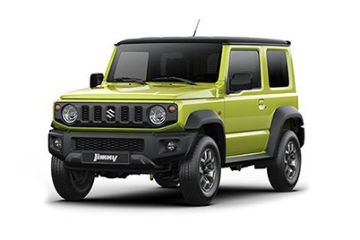
If there’s one type of vehicle that is well and truly Japanese, it’s the kei car.
Short for keijidosha or “light automobile,” these odd-looking little vehicles follow the regulations of Japan's smallest highway-legal passenger cars.

If there’s one type of vehicle that is well and truly Japanese, it’s the kei car.
Short for keijidosha or “light automobile,” these odd-looking little vehicles follow the regulations of Japan's smallest highway-legal passenger cars.
From 1998, a kei car may not be longer than 3,400 millimeters and no wider than 1,480 millimeters, with engines of up to 660 cc and a maximum power output of 64 PS.
For comparison, a Mitsubishi Mirage hatchback is 3,795 millimeters long and 1,665 millimeters wide. It is powered by a 1.2-liter, twin-cam, 12-valve inline-3 gasoline engine producing 78 PS and 100 Nm of torque.
But Mitsubishi Motors Corporation announced in a January 16, 2023 press statement that it will be producing one of its kei cars for the first time outside of Japan.
The company said the fully electric Mitsubishi Minicab-MiEV kei commercial vehicle will be manufactured at its PT Mitsubishi Motors Krama Yudha Indonesia factory in Indonesia starting 2024.

Mitsubishi said this was to accommodate the growing demand for electric vehicles (EV) in the ASEAN region, including business EVs, and to support the development of Indonesia’s car industry and environmental initiatives.

"Automakers are now being required to respond to the rapid, global movement toward a decarbonized society," said Mitsubishi Motors president and CEO Takao Kato.
"We believe that Kei-car class commercial EVs are the optimal solution to the 'last one mile problem' in logistics,” he added.
Mitsubishi Motors Philippines Corporation told AutoFun Philippines that it has no plans yet to bring the Minicab-MiEV into the country.

The Minicab-MiEV has been produced in Japan since 2011 and is primarily used in the delivery industry.
It is a rebadged version of the Suzuki Carry kei van, which also has a gasoline-powered sibling called the Mitsubishi Minicab.
Mitsubishi had ended production of the Minicab-MiEV, but resumed sales on November 2022 “in response to growing demand for such commercial EVs, particularly from logistics companies and local governments that are engaged in sustainable business activities.”
It is available with either a standard roof (1,810 mm tall) or a high roof (1,915 mm tall). The Minicab-MiEV is also 3,395 mm long and 1,475 mm wide, just within kei car regulations.

Powering this Mini commercial EV is either a 10.5-kWh or a 16-kWh battery pack, which is good for a claimed maximum range of 100 km or 150 km, respectively. This is connected to a rear-mounted electric motor producing 41 PS and a whopping 196 Nm of torque.
Mitsubishi said all EV components are mounted under the floor to maximize cargo space. The company said the van has a maximum payload of 350 kg.
Given that Republic Act 11697 or the “Electric Vehicle Industry Development” wants to transition government and commercial fleets to EVs, would the Mitsubishi Minicab-MiEV be a popular model if it were to be sold in the Philippines?
Did you like this story? Rate it now using the five stars below!
Hassle-free purchasing, get your next car fast!

2021 Suzuki Jimny GL Monotone 4AT
Upgrade
Add your car